#Emily Norcross Dickinson
Text
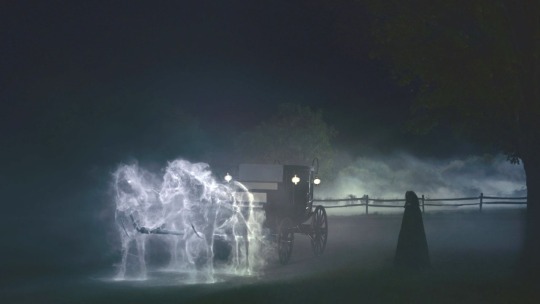
“Because I could not stop for Death –
He kindly stopped for me –
The Carriage held but just Ourselves –
And Immortality.”
- Emily Dickinson
#dickinson#emily dickinson#hailee steinfeld#apple tv plus#sue gilbert#austin dickinson#lavinia dickinson#emily norcross dickinson#edward dickinson#dickinson apple tv#emisue
28 notes
·
View notes
Text
Dickinson 1x03 felt like it was half an episode, in that its only purpose was to reveal Emily and Sue’s feelings to Austin and drive Sue away as Emily and Austin fought, suffocating her with their discord.
While in the first episode I thought perhaps Austin didn’t have true romantic feelings for Sue—that he only pursued her because she wasn’t interested in him—this episode began to disprove that. I do think there is some “male pride” driving his actions, but I believe he has genuine affection for her. See also the “muse” scene in 1x04, and his eager willingness to cover Sue’s debts and buy her dress when she suggested postponing the announcement of the wedding until she was no longer penniless.
Contrary to what Jane said, though, it feels like Emily is more in love with Sue than Sue is with Emily—that is, they are both in love with each other, as multiple events so far have shown, but it feels like a bigger part of Emily’s life, and a stronger pull, than for Sue. Likewise, it’s hard to get a bearing on Sue’s true feelings for Austin…she doesn’t appear to love him nearly as much as she does Emily—both Dickinson siblings are more enamored of Sue than Sue is with either of them!—but does she love him at all? Or has she only accepted his proposal, in a time of loss, to put an end to his pursuit of her and as something of a lifeline out of penniless orphanhood? And now she is trying every way to drag out the engagement and postpone the wedding, the true reasons for which only she knows. If Sue had a stable home like Emily, would she have continued to politely rebuff Austin just as Emily has done with George?
It was fascinating to see Emily suggest the party to Sue—who naturally agreed with Emily—and then Austin immediately give in to please Sue, when he had been dead-set against the idea coming from Emily and Lavinia!
Honorable mention: Lavinia’s crushing on the town bad boy, who seems hilariously the same as every television bad boy of the past half-century or so (also the local opium supplier!).
In 1x04, though, a full plot arc was back. We began and ended with the magnificent heirloom Dickinson oak—Emily’s favorite companion—and had many adventures in between!
I feel bad for George, because it’s clear to us that Emily is never going to choose him, no matter how loyal and useful he is…but I also get the sense that George genuinely likes Emily, so no matter the outcome—unless, by some strange series of events, she chooses someone else—he’s happy to spend time with her and to woo her, and, for a moment on the train, live the fantasy of a married couple.
Thoreau really is a piece of work! I almost wish George published the truth of his “interview”—and speaking of the college literary magazine, what happened to Emily’s poem that was to be published in it, already at the printer’s when she announced it, because she told Thoreau that she had never been published. Did Edward somehow force them to reprint the issue to save his reputation?
Another fun contrast between the two elder Dickinson siblings: both Emily and Austin have the same muse in Sue, yet Austin’s poem is no better than a trite schoolboy rhyme. I wonder whether Edward chose Austin to prepare a poem to spite Emily after her rude interruption, to test or spur on Austin, or both? (Or simply because it would cause him to lose face if he allowed his daughter to exhibit her intellectual and literary talents in public? I thought it seemed clear to him that he knew which child would be capable of producing a suitable poem for the occasion, and the results bore that out.)
On the Lavinia front, following her poor choice of men in the previous episode, and after wandering around town bizarrely in her “Indian headdress,” once Lavinia confesses the cause of her sadness, Mrs Dickinson’s “what makes you think the Indians would want you?” has got to set some sort of record for cruelty.
Once again, though, Emily is able to get her way; Edward undergoes an unexplained (Austin’s awful verse?) change of heart and decides to save the great tree. Somehow, in spite of Emily’s argument with him in front of Robert Picardo, she was the least-embarrassing Dickinson child this episode 😂
#musings#Dickinson#Dickinson 1x03#Dickinson 1x04#Emily Dickinson#Sue Gilbert#EmiSue#Austin Dickinson#Lavinia Dickinson#George Gould#Edward Dickinson#Emily Norcross Dickinson
1 note
·
View note
Text



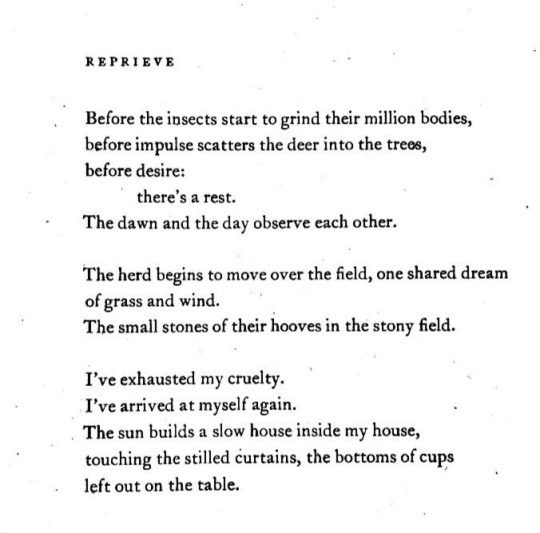


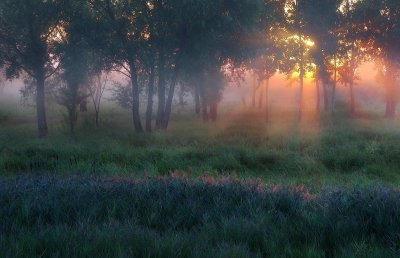
pascal debrunner \\ emily dickinson in a letter to louise and francis norcross (c. apr 1873) \\ abel cancino gutierrez \\ jenny george reprieve \\ @frommylimitedtravels \\ katherine arden the bear and the nightingale \\ sergei shlyaga
support this blog
#winter is too cold for me#can't wait for spring <33#and then i'm going overseas right back into winter lol#emily dickinson#louise norcross#francis norcross#mine#my webweaving#webweaving#ww#web#webs#web weaving#webweave#web weave#webweaves#web weaves#webweavings#web weavings#parallel#parallels#parallelism#compilation#compilations#intertext#intertextuality#comparative#comparatives#reprieve#jenny george
254 notes
·
View notes
Text
weeklypedia 4
Abandonware (from Voodoo Macbeth) †
Georges Bataille (from Gilles de Rais) †
Tamar (Genesis) *
Pavane (Fauré) *
Bethlem Royal Hospital *
Lady Macbeth of the Mtsensk District (novella)
Walkie Talkie Man
Serial Experiment Lain
Gary Gilmore
Exocannibalism *
Return to Innocence
Polar Environment Atmospheric Research Laboratory
The Saint (Simon Templar)
She Wants Revenge (album)
* wholly new pages
† derived from existing open tabs
2 notes
·
View notes
Text

5 notes
·
View notes
Text

Emily Dickinson, from a letter to Lavinia Norcross Dickinson
3K notes
·
View notes
Text


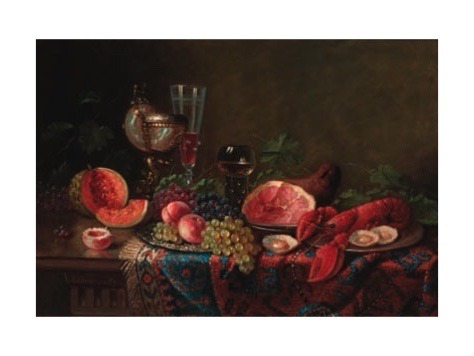


love is a feast, but you’ve learned to abstain.
color - tina chang, love disorders and other old heartaches - ashe vernon, a table set for a feast - ernst czernotzky, a letter to frances and louise norcross (1872) - emily dickinson, norwegian wood - haruki murakami, caption is an excerpt from a piece by @deadwatered
buy me kofi?
#how long has it been since i have posted one of these#on love#on love as hunger#on yearning#words#quotes#poetry#word webs#word weaving#parallels#post: poetry#tw food#tina chang#ernst czernotzky#emily dickinson#haruki murakami
247 notes
·
View notes
Text

Emily Dickinson, from To Louise Norcross, wr. December 1861 in "Letters of Emily Dickinson"
177 notes
·
View notes
Text






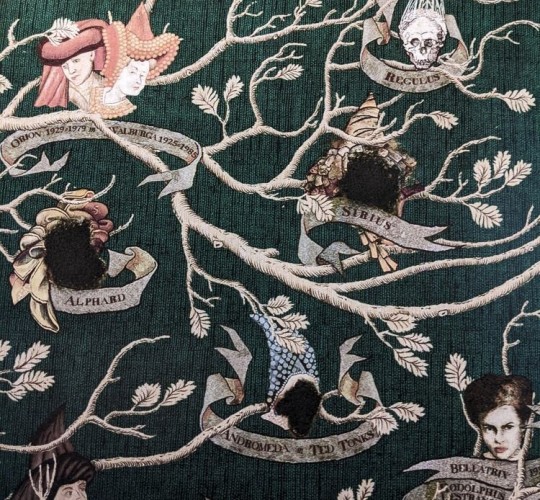

Bitter are the wars between brothers
Sirius & Regulus Black
Halsey, Colors // Phoebe Bridgers, Motion Sickness // Harry Potter and the Order of the Phoenix // Emily Dickinson, in a letter to Frances and Louise Norcross (1872) // Sirius and Regulus by Furipon on DeviantArt // William Shakespeare, King Lear // The burns on the House of Black tapestry: Alphard, Andromeda, and Sirius // Dan Pagis, Autobiography; translated by Stephen Mitchell
#LOOK GUYS I MADE SOMETHING#web weave#sirius black#regulus black#the noble and most ancient house of black#also a bit of walburga & orion in there#bitter are the wars between brothers#be kind guys this is my first-ever attempt at making one of these (idk how you guys do it. it took me a while)#I KNOW it's not the best but appreciate the sentiment <3
38 notes
·
View notes
Text

Emily Dickinson, from a letter to Lavinia Norcross Dickinson
8 notes
·
View notes
Text
Emily Dickinson
Emily Dickinson, an American poet, was born in 1830 in Amherst, Massachusetts. She spent the majority of her days in her hometown, with only brief excursions elsewhere for schooling or visits. Her family, with ties to Amherst College and active participation in local affairs, provided a sturdy foundation for Emily's upbringing. Her father, Edward Dickinson, was a respected lawyer and politician, while her mother, Emily Norcross Dickinson, battled with poor health, drawing Emily into caretaking duties as she grew older. Emily had two siblings, her sister Lavinia and brother Austin
Education played a significant role in Emily's formative years. Her time at Amherst Academy, where she cultivated friendships and wrote for school publications, set the stage for her intellectual pursuits. Later, at Mount Holyoke Female Seminary, Emily encountered a more structured religious environment, which would later influence her poetic themes of rebellion against societal norms and religious scepticism.
There are many speculations surrounding her affection for individuals such as Charles Wadsworth and Samuel Bowles as well as Judge Otis P. Lord, passionately expressed in her letters to him. Moreover, Dickinson's relationship with her sister-in-law, Susan Gilbert is debated too. Dickinson's letters to Susan reveal a depth of affection and intimacy that suggests a significant emotional connection beyond mere friendship.
In April 1862, Emily Dickinson penned a letter to the esteemed literary figure Thomas Wentworth Higginson, in response to his article in Atlantic Monthly titled “Letter to a Young Contributor.” In her letter, Dickinson, seeking guidance and validation for her poetry, enclosed four of her poems and earnestly asked Higginson for his assessment of her work. She expressed uncertainty about the vitality of her verse and pleaded for his honest opinion, stating that she had nobody else to turn to for feedback. Despite his initial reservations, Higginson advised Dickinson to continue refining her poetry before considering publication.
In her later years, Emily Dickinson led an increasingly isolated life. She often wore white and rarely interacted or greeted guests, avoiding social meetings. The deaths of loved ones, including her mother, father, and close friends, profoundly impacted Dickinson, deepening her sense of solitude and melancholy.
https://web.archive.org/web/20180807012709/http://www.emilydickinsonmuseum.org/publications_lifetime
6 notes
·
View notes
Text

Emily Dickinson in a letter to her cousin Louise Norcross, January, 1859.
21 notes
·
View notes
Text
Dickinson 2x03 felt like much ado about nothing, an excuse for a séance with only tiny bits of actual plot. This tick-tock of a vacant episode followed by a brilliant one is a bit tedious. (I find no urge to flesh out my quick notes, honestly.)
Sue is living the high life that the Dickinson name and (depleted) fortune allow, while Austin is a homebody, alone in an empty house. (She doesn’t have much time for her BFF Emily these days, either…and not because she’s spending all day in the kitchen.)
Lavinia is a modern woman, while Ship is stuck in the traditional ways.
Emily does not want to be a nobody and die without being published, without leaving something of value to the world. Finally, a decision! (Also, the scene with Henry was quite powerful; if he could put his name to his essays in support of abolition without it costing him, he would, and that seems to influence Emily.)
I have never before seen someone get so excited by latitude and longitude as Mrs Dickinson this episode 😳
Bowles still rubs me the wrong way. He’s shifty and feels slimy; he was so eager to get Emily’s work previously, and now, once he had it in hand, he was quick to reestablish the traditional power dynamic and put Emily “in her place” 😢
Poor Hattie! These white people are crazy! (At least they pay well.)
By contrast, 2x04 was 2 minutes longer by runtime, yet felt four times the episode. So much happened, and we learned so much. Not the least of which, writer’s block is a true terror. Worse, still, when it feels like someone has taken a piece of you and does not value it the way you do…
Emily’s use of the two meanings of “submission” in relation to giving Bowles a poem to publish was brilliant…and it was a theme that carried through the entire episode, Sue with Austin, Emily mère with Edward (although she, at least momentarily, flipped that), Lavinia with Ship, and Emily again with Bowles (at least that was his hope).
Emily and Edward’s relationship was again delightful, and his fatherly concern with her poetic problems and wish that he could do something to help was heartwarming. (Plus, birding was such fun!) Olmstead, however, was the true star of the episode. Eccentric in all the right ways, an artist, a mentor truly concerned with Emily’s quandary, offering wisdom and guidance: stop being the daisy, and start being the sun.
From that, Bowles attempts to swoop in and rescue the damsel in distress; he has told us many times already this season that he is the sun, but with Olmstead’s guidance, I hope Emily will resolve no longer to be his daisy. That said, the first four episodes together have put together a strong basis for Emily’s continuing ambivalence on being published. While the true “why” of it may be unclear, the ambivalence at least feels earned.
Austin and Sue continue living in two different worlds, and neither fully sees the other. Sue can’t tell how bored/empty/lonely Austin is, and while he at least acknowledges the promise he made to her, he doesn’t understand her (and he’s not alone; I have theories about Sue’s actions, but the show has done nothing to explain her change in behavior from the Sue we met at the beginning of the series). She has chosen, though, to submit, to let Austin have his way despite the horror these orphans bring her.
Edward has not always been the best husband or father, but he certainly has his moments, and it was good to see him and Mrs Dickinson have a long-needed heart-to-heart while at the bottom of the hole. While I have also often been critical of her, I do have sympathy for her position in the marriage, always coming second (or third, or…) to Edward’s plans, and his “we got old” was such a sad commentary on their lives—and a crappy excuse. (His proposal—in a letter, estimating a budget for their household—was so practical and devoid of everything one would hope for in our time.) However, for that moment at the bottom of the hole—and again when she walked away after he gave her a boost out—she became the sun, and I applaud her.
Lavinia is the person who, this season, seems to have the clearest sense of direction. She’s been trying all along to be the sun, not the daisy, but Ship literally kidnapped and entrapped her into an engagement to which she did not assent, forcing her to submit. (Her poor taste in men continues unabated, alas.) I wonder what happens from here and how she might escape from it? The irony of her being the Dickinson daughter who most wanted marriage now being the one who is trying to escape it…
#musings#Dickinson#Dickinson 2x03#Dickinson 2x04#Emily Dickinson#Henry#Sue Gilbert#Austin Dickinson#Lavinia Dickinson#Emily Norcross Dickinson#Samuel Bowles#Hattie#Edward Dickinson#Frederick Law Olmstead#Henry Shipley
1 note
·
View note
Text
thinking I might start posting what wikipedia tabs I have open at the end of each week. right now that would be:
Linen
Penal laws (Ireland)
Sunny von Bülow
Venus and Cupid (Gentileschi)
The Killers (1956 film)
Emily Norcross Dickinson
The Worst Journey in the World
Alferd Packer
Artie Traum
Sunglasses
Dover Beach
Luckiest Girl Alive (film)
The Wedding of Palo
Moby-Dick
Preacher Harry Powell
Fede ring
Ali MacGraw
Mendelian inheritance
American Fiction (film)
The Discovery of Slowness
Domesday Book
Rufus Sewell
The Saint (Simon Templar)
Motif-Index of Folk-Literature
She Wants Revenge (album)
Sonnets from the Portuguese
#a couple of these are old but most are from this last week probably yeah#which ones are fanfiction writing related and which are standard keaton googles place your bets#txt#weeklypedia
5 notes
·
View notes
Text
A little about Emily
Emily Elizabeth Dickinson was born in Amherst, Massachusetts, on December 10, 1830 to Edward and Emily (Norcross) Dickinson.
She lived throughout her life in her father’s house.
Near the end of her life, she rarely left alone. aside from a few mostly anonymous verses she remained unpublished when she died her poems were discovered some of the strangest most fascinating over 2000 in a…
View On WordPress
0 notes
Text
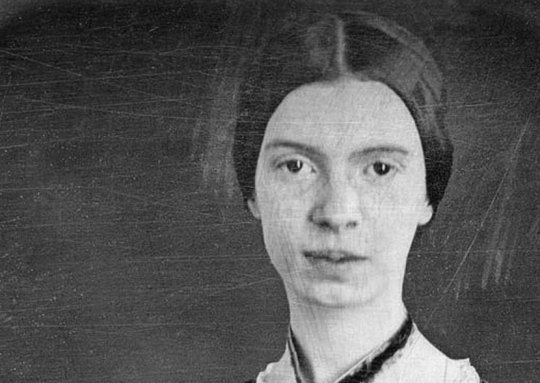
Emily Dickinson was a reclusive American poet. Unrecognized in her own time, Dickinson is known posthumously for her innovative use of form and syntax.
Who Was Emily Dickinson?
Emily Dickinson left school as a teenager, eventually living a reclusive life on the family homestead. There, she secretly created bundles of poetry and wrote hundreds of letters. Due to a discovery by sister Lavinia, Dickinson's remarkable work was published after her death — on May 15, 1886, in Amherst — and she is now considered one of the towering figures of American literature.
Early Life and Education
Dickinson was born on December 10, 1830, in Amherst, Massachusetts. Her family had deep roots in New England. Her paternal grandfather, Samuel Dickinson, was well known as the founder of Amherst College. Her father worked at Amherst and served as a state legislator. He married Emily Norcross in 1828 and the couple had three children: William Austin, Emily and Lavinia Norcross.
An excellent student, Dickinson was educated at Amherst Academy (now Amherst College) for seven years and then attended Mount Holyoke Female Seminary for a year. Though the precise reasons for Dickinson's final departure from the academy in 1848 are unknown; theories offered say that her fragile emotional state may have played a role and/or that her father decided to pull her from the school. Dickinson ultimately never joined a particular church or denomination, steadfastly going against the religious norms of the time.
Family Dynamics and Writing
Dickinson began writing as a teenager. Her early influences include Leonard Humphrey, principal of Amherst Academy, and a family friend named Benjamin Franklin Newton, who sent Dickinson a book of poetry by Ralph Waldo Emerson. In 1855, Dickinson ventured outside of Amherst, as far as Philadelphia, Pennsylvania. There, she befriended a minister named Charles Wadsworth, who would also become a cherished correspondent.
Among her peers, Dickinson's closest friend and adviser was a woman named Susan Gilbert, who may have been an amorous interest of Dickinson's as well. In 1856, Gilbert married Dickinson's brother, William. The Dickinson family lived on a large home known as the Homestead in Amherst. After their marriage, William and Susan settled in a property next to the Homestead known as the Evergreens. Emily and sister Lavinia served as chief caregivers for their ailing mother until she passed away in 1882. Neither Emily nor her sister ever married and lived together at the Homestead until their respective deaths.
Dickinson's seclusion during her later years has been the object of much speculation. Scholars have thought that she suffered from conditions such as agoraphobia, depression and/or anxiety, or may have been sequestered due to her responsibilities as guardian of her sick mother. Dickinson was also treated for a painful ailment of her eyes. After the mid-1860s, she rarely left the confines of the Homestead. It was also around this time, from the late 1850s to mid-'60s, that Dickinson was most productive as a poet, creating small bundles of verse known as fascicles without any awareness on the part of her family members.
In her spare time, Dickinson studied botany and produced a vast herbarium. She also maintained correspondence with a variety of contacts. One of her friendships, with Judge Otis Phillips Lord, seems to have developed into a romance before Lord's death in 1884.
Death and Discovery
Dickinson died of heart failure in Amherst, Massachusetts, on May 15, 1886, at the age of 55. She was laid to rest in her family plot at West Cemetery. The Homestead, where Dickinson was born, is now a museum.
Little of Dickinson's work was published at the time of her death, and the few works that were published were edited and altered to adhere to conventional standards of the time. Unfortunately, much of the power of Dickinson's unusual use of syntax and form was lost in the alteration. After her sister's death, Lavinia discovered hundreds of poems that Dickinson had crafted over the years. The first volume of these works was published in 1890. A full compilation, The Poems of Emily Dickinson, wasn't published until 1955, though previous iterations had been released.
Emily Dickinson was a reclusive American poet. Unrecognized in her own time, Dickinson is known posthumously for her innovative use of form and syntax.
Who Was Emily Dickinson?
Emily Dickinson left school as a teenager, eventually living a reclusive life on the family homestead. There, she secretly created bundles of poetry and wrote hundreds of letters. Due to a discovery by sister Lavinia, Dickinson's remarkable work was published after her death — on May 15, 1886, in Amherst — and she is now considered one of the towering figures of American literature.
Early Life and Education
Dickinson was born on December 10, 1830, in Amherst, Massachusetts. Her family had deep roots in New England. Her paternal grandfather, Samuel Dickinson, was well known as the founder of Amherst College. Her father worked at Amherst and served as a state legislator. He married Emily Norcross in 1828 and the couple had three children: William Austin, Emily and Lavinia Norcross.
An excellent student, Dickinson was educated at Amherst Academy (now Amherst College) for seven years and then attended Mount Holyoke Female Seminary for a year. Though the precise reasons for Dickinson's final departure from the academy in 1848 are unknown; theories offered say that her fragile emotional state may have played a role and/or that her father decided to pull her from the school. Dickinson ultimately never joined a particular church or denomination, steadfastly going against the religious norms of the time.
Family Dynamics and Writing
Dickinson began writing as a teenager. Her early influences include Leonard Humphrey, principal of Amherst Academy, and a family friend named Benjamin Franklin Newton, who sent Dickinson a book of poetry by Ralph Waldo Emerson. In 1855, Dickinson ventured outside of Amherst, as far as Philadelphia, Pennsylvania. There, she befriended a minister named Charles Wadsworth, who would also become a cherished correspondent.
Among her peers, Dickinson's closest friend and adviser was a woman named Susan Gilbert, who may have been an amorous interest of Dickinson's as well. In 1856, Gilbert married Dickinson's brother, William. The Dickinson family lived on a large home known as the Homestead in Amherst. After their marriage, William and Susan settled in a property next to the Homestead known as the Evergreens. Emily and sister Lavinia served as chief caregivers for their ailing mother until she passed away in 1882. Neither Emily nor her sister ever married and lived together at the Homestead until their respective deaths.
Dickinson's seclusion during her later years has been the object of much speculation. Scholars have thought that she suffered from conditions such as agoraphobia, depression and/or anxiety, or may have been sequestered due to her responsibilities as guardian of her sick mother. Dickinson was also treated for a painful ailment of her eyes. After the mid-1860s, she rarely left the confines of the Homestead. It was also around this time, from the late 1850s to mid-'60s, that Dickinson was most productive as a poet, creating small bundles of verse known as fascicles without any awareness on the part of her family members.
In her spare time, Dickinson studied botany and produced a vast herbarium. She also maintained correspondence with a variety of contacts. One of her friendships, with Judge Otis Phillips Lord, seems to have developed into a romance before Lord's death in 1884.
Death and Discovery
Dickinson died of heart failure in Amherst, Massachusetts, on May 15, 1886, at the age of 55. She was laid to rest in her family plot at West Cemetery. The Homestead, where Dickinson was born, is now a museum.
Little of Dickinson's work was published at the time of her death, and the few works that were published were edited and altered to adhere to conventional standards of the time. Unfortunately, much of the power of Dickinson's unusual use of syntax and form was lost in the alteration. After her sister's death, Lavinia discovered hundreds of poems that Dickinson had crafted over the years. The first volume of these works was published in 1890. A full compilation, The Poems of Emily Dickinson, wasn't published until 1955, though previous iterations had been released.
Dickinson's stature as a writer soared from the first publication of her poems in their intended form. She is known for her poignant and compressed verse, which profoundly influenced the direction of 20th-century poetry. The strength of her literary voice, as well as her reclusive and eccentric life, contributes to the sense of Dickinson as an indelible American character who continues to be discussed today.
Fact Check
We strive for accuracy and fairness. If you see something that doesn't look right, contact us!
Citation Information
Article Title
Emily Dickinson Biography
Author
Biography.com Editors
Website Name
The Biography.com website
URL https://www.biography.com/writer/emily-dickinson
Access Date
27 October 2022
Publisher
A&E Television Networks
Last Updated
May 7, 2021
Original Published Date
April 2, 2014
0 notes